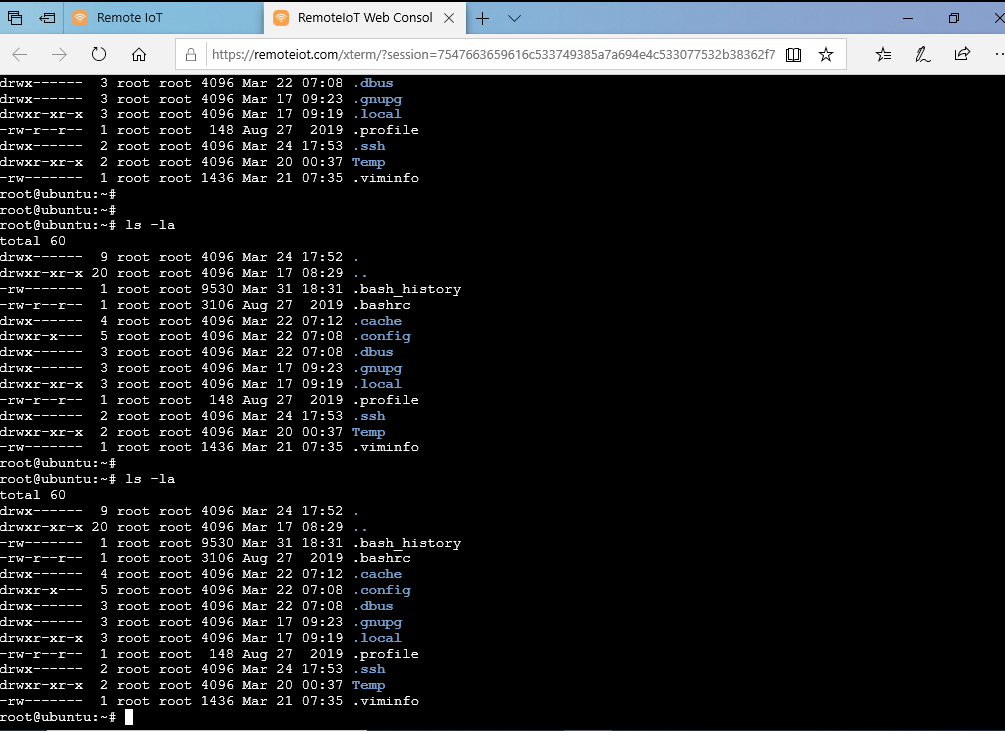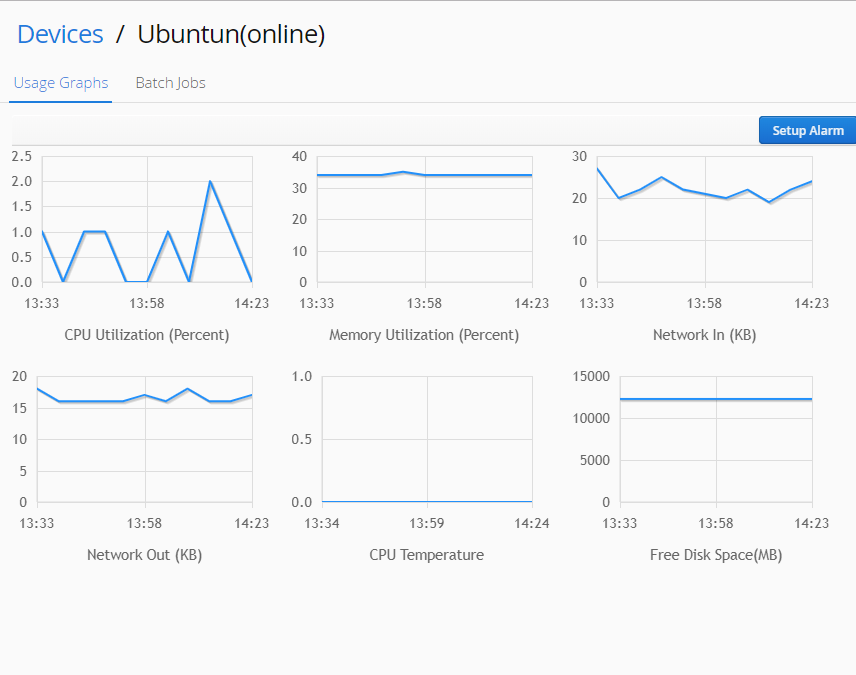
Operating a microcomputer externally proves to be significantly helpful, still doing so furthermore incurs imminent safeguarding threats. To reduce present risks, enforcing effective protection systems and recognizing how Network Address Translation (NAT) acts is necessary. A firewall acts as a barrier between one's Pi and the outside world, enabling you to regulate incoming and outgoing traffic based on fixed rules. By configuring your firewall to only authorize trusted connections, you can significantly strengthen the security of your device.
NAT routers are another crucial element in remote access security. They designate private IP addresses to devices within your network and present a single public IP address to the outside world. This mechanism helps to mask the internal network structure, making it trickier for attackers to focus on individual devices. By utilizing both firewalls and NAT routers, you can create a secure and robust remote access solution for your Raspberry Pi.
Interfacing IoT Devices from Anywhere at all the Firewall
The environment of Internet of Things (IoT) offers unique opportunities for automation, but it also presents unique barriers. One key problem is securely reaching these devices from distant locations. Traditional firewalls, designed to protect architectures from external threats, often prevent access to IoT endpoints, inhibiting the full potential of connected solutions. To overcome this barrier, innovative strategies are emerging.
- Cloud-based platforms allow for trusted access to IoT devices, enabling users to manage them from anywhere with an internet channel.
- Confidential Network technologies create a restricted tunnel between the user's device and the IoT network, safeguarding data during exchange.
- Zero-Trust protocols enforce strict access controls, checking the identity of users before granting them access to specific devices.
By embracing these practices, organizations can tap into the full benefits of IoT while ensuring the reliability of their valuable data and systems.
Narrowing the Divide: Accessing to Raspberry Pis Behind Network Address Translation (NAT)
Network Address Translation (NAT) can sometimes pose a hurdle when trying to log into your Raspberry Pi from outside your local network. While NAT effectively masks private IP addresses, it can make direct connections difficult. Fortunately, there are several solutions to bridge this gap and enable seamless remote access to your Raspberry Pis.
- One common approach is to utilize a Dynamic DNS service, which provides a constant hostname for your Pi that updates automatically even when its IP address changes.
- Another option is to set up port forwarding on your router, allowing specific ports on your Raspberry Pi to be redirected to public IP addresses. This method requires careful configuration and understanding of network protocols.
- For more secure access, consider implementing a VPN (Virtual Private Network). A VPN encrypts your connection and routes it through a confidential server, masking your real IP address and providing an extra layer of protection.
By exploring these strategies and selecting the most appropriate solution for your needs, you can effectively bridge the gap created by NAT and gain reliable remote access to your Raspberry Pis, unlocking their full potential from anywhere with an internet connection.
Opening Remote Paths: IoT Device Access Within Firewalls
Remote access of IoT devices frequently be a challenge when up against firewalls. These security measures formulated to protect your network can sometimes block your ability to control your intelligent devices from afar. However, recognizing the principles behind firewall operation and implementing tailored configurations can allow a secure pathway for remote supervision.
One established approach is to design port forwarding rules. This comprises directing specific IP addresses and ports to your IoT device, effectively making a direct connection. Another method capitalizes on VPNs (Virtual Private Networks). By setting up a secure tunnel between your device and the network where your IoT device resides, you can sidestep firewall restrictions and gain access to your devices remotely. It's vital to remember that implementing these solutions necessitates a thorough understanding of your network infrastructure and security protocols to guarantee the integrity and safety of your system.
- Utilize strong passwords for your router and IoT devices.
- Often update firmware on your router and IoT devices to resolve security vulnerabilities.
- Turn off any unnecessary services or ports on your router.
Administering Firewalls for Remote Raspberry Pi Management
Remotely administering your Raspberry Pi could be a powerful way to monitor its capabilities. However, firewalls are crucial for affirming the security of your device. Properly deploying firewall rules grants you to restrict incoming and outgoing network traffic, excluding unauthorized interactions. Understanding how to handle these settings is important for safeguarding the integrity of your Raspberry Pi.
- Apply a firewall software solution designed for Raspberry Pi. Numerous versions are available, each with its own set of capabilities.
- Establish clear rules that specify which ports should be open and which should remain disabled.
- Analyze the use of a VPN for an extra layer of defense when connecting remotely.
Note that firewall parameters should be personalized to your specific needs.
Remote Access Essentials: A Guide to Securely Managing IoT Devices Behind NAT
Effectively administering your Internet of Things (IoT) devices from a remote location presents unique problems. NAT (Network Address Translation), commonly used in home and small office networks, can complicate this process. This guide will delve into the essential steps to securely access and set up your IoT devices behind a NAT firewall.
- At the outset, establish a secure connection between your remote device and your local network using a reliable VPN protocol like OpenVPN or WireGuard.
- Subsequently, configure port forwarding rules on your router to allow incoming network calls to the specific ports used by your IoT devices. Ensure you only forward traffic to the required ports and use strong passwords for authentication.
- ,Finally, consider implementing multi-factor authentication (MFA) for added security when accessing your IoT devices remotely. MFA adds an extra layer of protection by requiring multiple forms of verification, such as a password and a unique code sent to your phone.
By embracing these best practices, you can safely and securely maintain your IoT devices from anywhere with an internet connection.
Protecting Remote Access to Your Raspberry Pi
Desiring remote control over your Raspberry Pi? A firewall is essential for safely enabling remote access. It acts as a gatekeeper, blocking unauthorized requests while allowing validated requests through. By implementing proper firewall configurations, you can ensure your Pi remains secure even when accessed remotely.
Begin by identifying the services you need to expose externally. SSH are common examples. Configure your firewall to enable inbound access on the specific ports used by these services. Remember, a well-configured firewall will only open the necessary doors, limiting potential vulnerabilities.
- Leverage a robust firewall software package designed for Raspberry Pi, such as UFW or iptables.
- Establish strong passwords for your remote access accounts.
- Consistently review and update your firewall rules to address any changes in your infrastructure.
Connect Remotely to Raspberry Pis Through Firewalls and NAT Routers
Securing your Raspberry Pi within a network environment often involves traversing firewalls and Network Address Translation (NAT) routers. This can seem daunting initially, but understanding these components is crucial for safely connecting to your device from afar. This guide provides an in-depth walkthrough of common methods for remote access, empowering you to manage with your Raspberry Pi effectively regardless of its physical location.
We'll delve into the fundamentals of firewalls and NAT, outlining their roles in network security. Then, we'll explore various ways for establishing secure connections, including SSH tunneling, VPNs, and port forwarding. What's more, we'll provide practical steps and examples to help you implement these techniques on your own setup.
By mastering the art of remote access, you can unlock a world of possibilities for your Raspberry Pi projects, enabling you to monitor performance, resolve issues, and even control your devices remotely.
Secure Remote Access for Your Raspberry Pi
Need remote access to your Raspberry Pi? Follow these guidelines to set up secure remote access. First, establish a suitable protocol like SSH or VNC. Next, deploy the necessary software on your Pi. Create a strong password and enable two-factor authentication for added security. Then, channel the required ports on your router to your Pi's IP address. Finally, test your connection from a remote device.
- Apply firewalls to protect your Raspberry Pi.
- Update your software up-to-date to patch vulnerabilities.
- Track your system logs for suspicious activity.
From Home Network to the World: Remotely Controlling Your Raspberry Pi Across Firewalls
Your compact device can be much more than just a local project. With the right setup, you can control it from anywhere in the world, regardless of firewalls or distance. This opens up a universe of possibilities - managing your home automation, accessing data remotely, or even running offsite services directly from your Pi.
While this may seem daunting at first, setting up remote access for your Raspberry Pi is surprisingly straightforward. You'll need to configure your network settings, set up a secure connection, and choose the right tools for controlling your device remotely. Here are some major factors to get you started:
* First, ensure your home network is configured properly. This includes setting up port forwarding rules to allow access to your Pi from outside your local network.* Next, choose a secure connection protocol like SSH or VPN. These protocols encrypt your communications and protect your data from hacking.* Finally, select a remote control tool that suits your needs. Popular options include VNC for graphical access, SSH clients for text-based interaction, and cloud-based platforms for simplified management.
Once you've taken these steps, you can enjoy the freedom of controlling your Raspberry Pi from anywhere with an internet connection. This opens up a world of possibilities for learning, experimenting, and building powerful projects.
Accessing IoT Devices Beyond the Local Network: Firewalls and NAT
Extending the reach of Internet of Things (IoT) devices external to the confines of your local network requires careful consideration of security mechanisms. Firewalls serve as crucial sentries, meticulously scrutinizing incoming and outgoing traffic to prevent potential threats. Network Address Translation (NAT), on the other hand, allows multiple devices on a private network to share a single public IP address, augmenting network efficiency and safeguarding internal locations.
By implementing robust firewall configurations and employing NAT effectively, you can create a secure and organized environment for your IoT ecosystem to thrive. This combination of platforms ensures that your devices can securely transmit with the wider internet while operating protected from malicious actors.
- Arrange comprehensive firewall rules to permit only trusted traffic.
- Leverage NAT to cover internal device addresses.
- Monitor network activity for any suspicious behavior.
